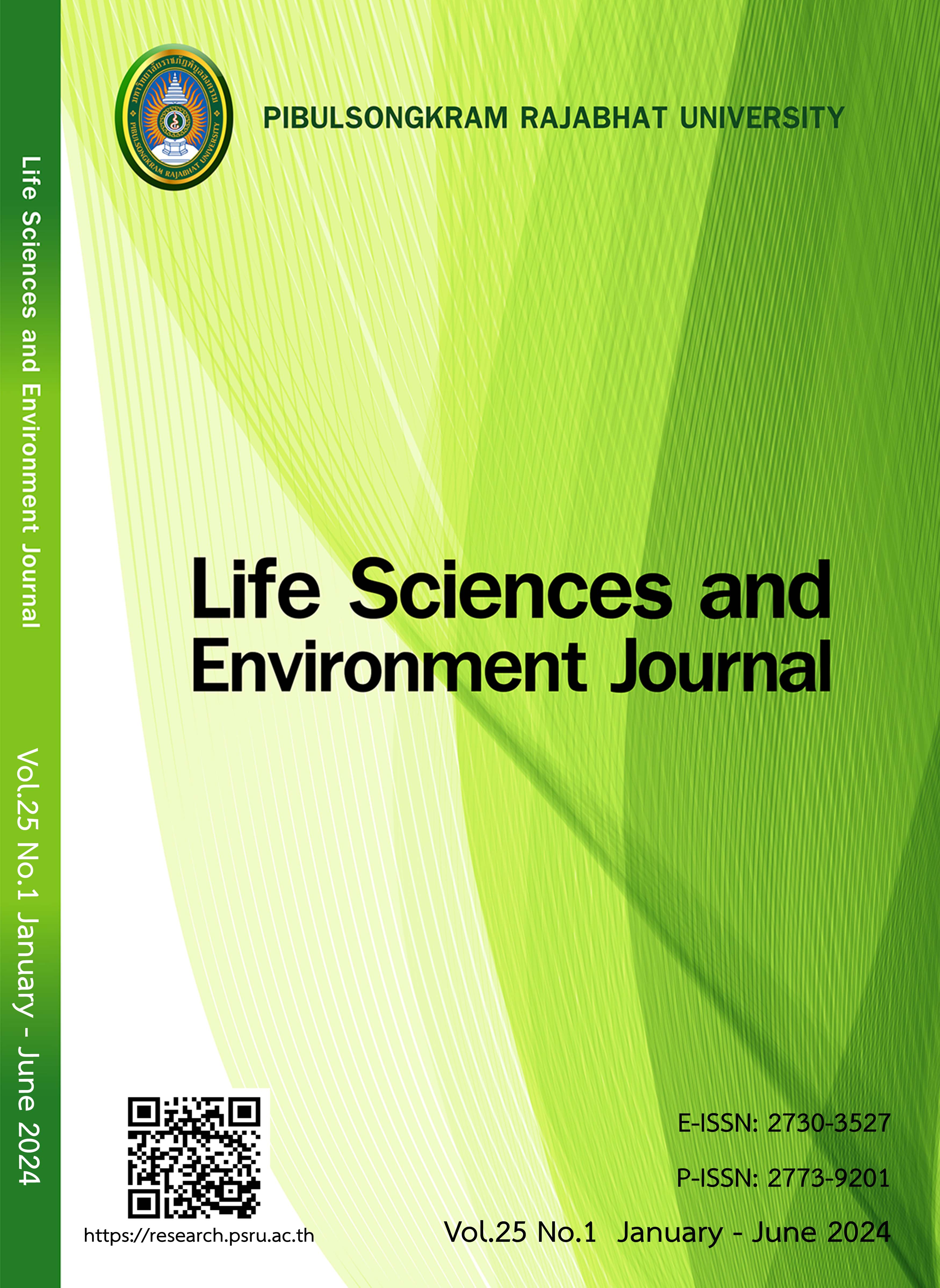EFFECT OF WASTE ACTIVATED SLUDGE AND PALM FIBER RATIO ON QUALITY OF COMPOST
DOI:
https://doi.org/10.14456/lsej.2024.8Keywords:
compost, waste activated sludge, palm fiberAbstract
Waste activated sludge (WAS) and palm fibers are classified as industrial waste with a high amount of nutrients and organic matter. This research is investigated the effect of 6 ratios of WAS to palm fiber at 100:0, 90:10, 80:20, 70:30, 60:40 and 50:50 by weight for 60 days. The results showed that all ratios of compost had physical properties in accordance with the standard for organic fertilizer of the Department of Agriculture. While the chemical properties, the cadmium content was found to be in the range of 4.6 to 8.3 mg/kg, which exceeds the standards and tends to increase as the proportion of WAS increases. The 70:30 ratio achieved the highest germination index (83.10%), which differed significantly from the other ratios. In conclusion, a compost ratio 70:30 is deemed most suitable for producing compost from WAS and palm fiber, meeting germination index standards. However, the slightly elevated cadmium content indicates the need for improved fermentation methods, possibly by using the proportion of WAS less than 50 %, sludge pretreatment to reduce cadmium before fermentation is a consideration and it is recommended to increase the type of materials used in co-fermentation. In addition, the long-term use of this compost on plants should be studied regarding its effects on the food chain and the environment.
References
Buaphan S. The study of formulas and appropriate nutrient proportion for producing organic fertilizer from sewage sludge from wastewater. Master of Science, Faculty of Science and Technology, Naresuan University; 2005.
Chantip P. Compositing of water hyacinth with excess sludge from wastewater treatment plants of the concentrated latex factory and sludge from Standard Thai Rubber (STR 20) factory. Master of Science in Environmental Management, Prince of Songkla University; 2016.
Department of Agriculture. Organic fertilizer: production, use, standards and quality (Academic document number 17/2005). Ministry of Agriculture and Cooperatives. (2005). Available at: http://lib.doa.go.th/multim/e-book/EB00280.pdf. Accessed December 11, 2023.
Department of Agriculture. Standard of organic fertilizer. 2005. Available at: https://www.ratchakitcha. soc.go.th/DATA/PDF/2548/00172707.PDF. Accessed December 11, 2023.
Department of Agriculture. Standard of organic fertilizer. 2012. Available at: https://www.doa.go.th/ ard/wp-content/uploads/2019/11/FEDOA5.pdf. Accessed December 11, 2023.
Fu H, Yu H, Li T, Zhang X. Influence of cadmium stress on root exudates of high cadmium accumulating rice line (Oryza sativa L.). Ecotoxicology and Environmental Safety. 2018; 150, 168–175. Available at: https://doi.org/10.1016/j.ecoenv.2017.12.014. Accessed March 19, 2024.
Jungniyom T. Zero – waste process in oil palm extraction industries. Hatyai Academic Journal 2008; 6(2):159-164.
Land Development Department. Operation manual process for analyzing plants, fertilizers, and soil amendments. Document No. OSD-07; 2010.
Lorestani AAZ. Biological treatment of palm oil effluent (POME) using an up-flow anaerobic sludge fixed film (UASFF) bioreactor. Doctor of Philosophy (Chemical Engineering), University Sains Malaysia; 2006.
Ministry of Industry. The disposal of waste or unused materials, Announcement Issue 1; 2005. Available at: https://dl.parliament.go.th/backoffice/viewer2300/web/previewer.php. Accessed December 11, 2023.
Namkorn R, Silapanuntakul S, Vatanasomboon P, Prechthai T. Co-compost production from sewage sludge mixed with vegetable wastes and scum. Journal of Community Development and Life Quality 2015;3(1):95-103.
Office of Agricultural Economics. Agricultural Statistics of Thailand 2022. 2023. Available at: https://www.oae.go.th/assets/portals/1/files/jounal/2566/yearbook2565.pdf. Accessed January 2, 2024.
Osotsapa Y, Wongmaneeroj A, Hongprayoon C. Fertilizer for sustainable agriculture. Kasetsart University Press; 2008.
Rodyoy S. Investigation of aerobic-anaerobic digestion system for excess sludge reduction. Master of Engineering (Environmental Engineering), Faculty of Engineering, Suranaree University of Technology; 2011.
Sirianuntapiboon S. Wastewater treatment system: selection, design, operation and problem solving. Bangkok: Top; 2009.
Sitisara W, Pongpattanasiri S. Reduction of cadmium contamination in soil for transplaning paddy fields. Naresuan Phayao Journal 2022;15(1):122-136.
Walter I, Martínez F and Cala V. Heavy metal speciation and phytotoxic effects of three representative sewage sludges for agricultural uses. Environ Pollut 2006;139(3):507-514.
Downloads
Published
How to Cite
Issue
Section
License
Copyright (c) 2024 Life Sciences and Environment Journal

This work is licensed under a Creative Commons Attribution-NonCommercial-NoDerivatives 4.0 International License.
Each article is copyrighted © by its author(s) and is published under license from the author(s).










